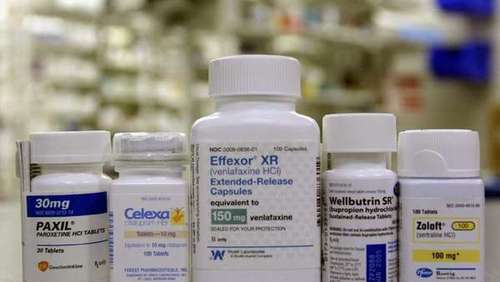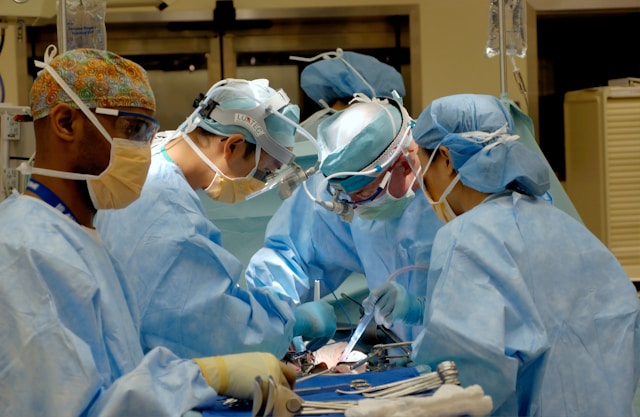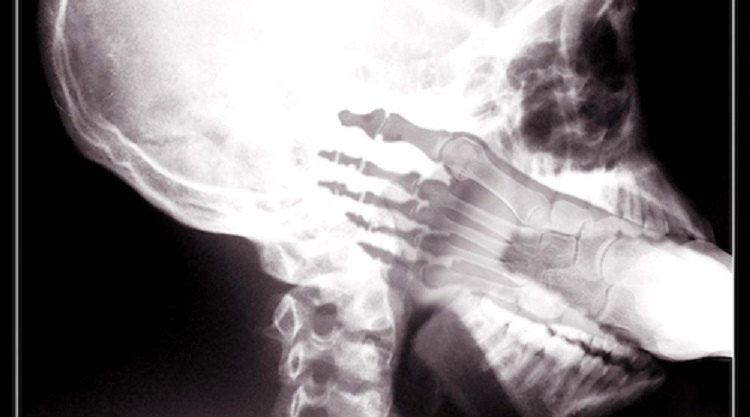Recently, I read an article about the link between maternal antidepressant use and the development of autism in children [1]. This new study published in JAMA Pediatrics provides epidemiological evidence that antidepressant use adversely affects fetal brain development in children of the mothers using antidepressants. The article weighs in on a topic that has had mixed results reported in previous studies.
I found it interesting and encouraging that scientists are thinking more carefully about what is called the prenatal environment, the protective fetal environment in the uterus that includes the placenta and umbilical cord. Until the 1960s, it was thought that the placenta acted as a kind of filter or barrier to help keep anything unwanted or harmful from adversely affecting the baby. We now know that potentially harmful substances can cross the placenta and be transferred to the developing child from the mother. While the prenatal environment protects the embryo and fetus from many dangers, it cannot protect the unborn child from everything in which the mother comes into contact, like exposure to disease, medications, or environmental substances.
The attention to this protective environment means that scientists are coming to grips with the fact that the condition of the mother and of the prenatal environment are not just germane to birth defects seen at delivery but that they are also relevant to much longer-term consequences like the development of autism, other neurodevelopmental disorders, and disease processes common to our time. They are beginning to see the complex interplay between genetics, environment, and epigenetics. This study, like many others examining factors involved with autism risk, is a good first step in trying to solve the mystery of autism. But what if the problem starts further back in the developmental process of the fetus? What if modifications to the oocyte occur and the deleterious effects to the germ cell initiate the trouble?
First, let’s look at the design problems with this epidemiological study. Then, I will explain how the results of this study might be reinterpreted in a novel way.
Antidepressant Use during Pregnancy: Study Basics
Anick Berard and her colleagues in Quebec studied 145,456 children born between 1998 and 2009 [2]. There were 4,524 children born to mothers who took antidepressants at some time during their pregnancy. The children diagnosed with autism totaled 1,054 or about 0.7 percent of the all of the babies. However, only 46 of the 1,054 were born to mothers who took antidepressants. Berard et. al were also interested in the window of time when the damage occurred, so their main results concern mothers who took antidepressants during the second or third trimester. Those women accounted for 2,532 infants, of whom 31 of the children were diagnosed with autism. Significant results? Not sure, but let’s continue.
In the results section of the study, table 2 to be precise, we see the windows of time when the antidepressants were prescribed to the women. The results show that out of 9,207 infants whose mothers used antidepressants one year before pregnancy, 82 were diagnosed with autism at a later point in time. After adjusting for confounders, the researchers found no increased risk for these infants. Out of 4,200 infants whose mothers took antidepressants during the first trimester, 40 were diagnosed with autism. Again, after adjustments were made, no significant risk was shown. Lastly, the third group of 2,532 children whose mothers took antidepressants during the 2nd or 3rd trimester showed that 31 of their children were diagnosed with autism at a later time. This is where the relative risk increased to the 87 percent, which caught the headline. Of important note, the overall risk of autism in this study was 0.7 percent, consistent with other studies.
Problems with Study Design
This study has problems worth mentioning. From the design standpoint, the study has limitations. The study used prescription filling data to determine which of the women subjects were using antidepressants. However, this data did not provide evidence that the women actually took the medication or when they took it. More troubling was that the study did not control for lifestyle factors. The researchers did control for gestational diabetes, hypertension, maternal age, and history of depression, but left out important lifestyle factors like smoking, body weight and mass, use of oral contraceptives, and other factors that might influence the findings.
Autism Speaks was quick to point out that this study is one of many with mixed results and that some previous studies have actually supported antidepressant use during pregnancy [3]. This study appears to exclude some of the pertinent variables used in earlier studies. Epidemiologist and Autism Speaks Director of Public Health Michael Rosanoff commented that the published results require important context. Rosanoff pointed out that, “risk does not equal cause. Eighty-seven percent risk is actually very modest. If the average child has a 1 percent risk, then these children had a 1.87 chance. It may be a risk factor, but according to this study it increases the risk only modestly [3].” And, Susan Hyman, former chair of the American Academy of Pediatrics committee on autism, pointed out that although the use of antidepressants in pregnant women is rising in the U.S. from 6 percent in 1999 to 13 percent in 2003, the vast majority of them do not have children with autism.
Remember, this study only looked into the link between antidepressant use and autism. These results do not show cause, nor do they shed light on any of the other developmental problems that might arise from taking antidepressants or other medications while pregnant. It is important also to note that epidemiological studies are by nature limited and therefore, the results may be misleading. They are not meant to reveal cause, but merely to show a link or make correlations, to point the way for further inquiry. And, these researchers did find a small correlation between maternal antidepressant use and the development of autism in children.
Another Explanation for the Correlation between Antidepressants and Autism
Berard et. al did find a link between antidepressant use and autism, and they found it in a window of developmental time suggesting that something may be amiss here. However, I think that the problem begins long before the prenatal environment is created and infiltrated by antidepressants or other substances that in turn adversely affect the brain of the developing fetus. I posit that the disturbance begins with the oocyte, the unfertilized egg. It is possible that the oocyte is altered or modified before fertilization occurs, before it even reaches the prenatal environment. Perhaps this recent finding and the increase in prevalence of autism may be understood using Alfred Knudson’s multiple hit hypothesis, which was first developed in considering the ontogeny of retinoblastoma [3].
Knudson’s hypothesis is that an occurrence of cancer is the result of accumulated mutations to a cell’s DNA. Knudson’s 1971 paper proposed that individuals will develop cancer of the retina if they either: inherit one mutated retinoblastoma (Rb) gene and incur a second mutation (possibly environmentally induced) after conception; or if they incur two mutations or “hits” after conception [3]. If only one Rb gene functions normally, the cancer is suppressed.
Knudson suggested that multiple “hits” to DNA were necessary to cause cancer. In the children with inherited retinoblastoma, the first insult was inherited in the DNA, and any second insult would rapidly lead to cancer. In non-inherited retinoblastoma, two “hits” had to take place before a cancer could develop.
Generalizing this hypothesis, in the context of neurodevelopmental disorders such as autism, the oocyte suffers the first insult with its exposure, in situ in the ovary. In my hypothesis, I posit the first insult is made by the hormonal compounds found in oral contraceptives [4]. It is possible that other compounds insult the oocyte; I focus on hormonal contraceptives because they are known endocrine disruptors and ubiquitously used in the U.S.
This first insult might include aberrant retention of the oocyte for too long a time period, direct effects in the oocyte of estrogen/progesterone receptor activation, or the secondary triggering of an abnormal hormonal milieu in the corpus luteum. The second insult might be in the pre-existing ovum or occur subsequently over the lifespan, and might include genetic, environmental, or epigenetic factors. Perhaps the second or third insult occurs in the prenatal environment by something like an antidepressant, another medicine, or an environmental substance. The combination of the two or three “hits” could then lead to autism in the offspring. (See Fig. 1)
Using Knudson’s model, it is conceivable that the damage is done before the egg is fertilized and implanted in the prenatal environment. The model might also take into account the variety of symptoms displayed on the autism spectrum with different insults resulting in different symptoms of the disorder.
 Figure 1. Multi-Hit Model of Autism Risk. The model proposes that Autism Spectrum Disorders (ASD’s) can arise from a coincidental occurrence of several physiologic insults in a single individual. Specifically, the model hypothesizes that use of Combined Oral Contraceptives (blue oval) confers risk for developing an ASD, when occurring in conjunction with a second (or more) additional risk factor. Known risk factors might include genetic, environmental, or epigenetic factors (purple oval). In addition, the presence of other unknown risk factors in the same individual might be necessary for development of an ASD (dashed circle).
Figure 1. Multi-Hit Model of Autism Risk. The model proposes that Autism Spectrum Disorders (ASD’s) can arise from a coincidental occurrence of several physiologic insults in a single individual. Specifically, the model hypothesizes that use of Combined Oral Contraceptives (blue oval) confers risk for developing an ASD, when occurring in conjunction with a second (or more) additional risk factor. Known risk factors might include genetic, environmental, or epigenetic factors (purple oval). In addition, the presence of other unknown risk factors in the same individual might be necessary for development of an ASD (dashed circle).
Take Home Message
It is good news that scientists are delving deeper into the complexities of reproduction and more carefully examining how the mother and her body respond to the possible adverse effects of pharmaceuticals and other harmful environmental factors. For too long we have turned a blind eye to the possibility that not all effects of pills and medication are positive. They come with some negative consequences and not just for the mother. Scientists are discovering that the use of pharmaceuticals may adversely affect the offspring of those that use them. They are also uncertain about drug “wash-out” time-frames. In other words, if and when it is safe after the cessation of using medications. And, even if there is full drug wash-out, persisting toxicological, genetic, and most importantly, epigenetic effects are possible. If this is the case, then harmful exposure could occur before, during, or after fertilization and/or during early development of the embryo.
Csoka and Zsyf propose the hypothesis that “commonly-used pharmaceutical drugs can cause persistent epigenetic changes. Drugs may alter epigenetic homeostasis by direct or indirect mechanisms. Direct effects may be caused by drugs which affect chromatin architecture or DNA methylation. [4]”. This means the damage may begin long before the prenatal environment is created to protect the developing fetus. It also means that modification to the germ cell may be transgenerational or capable of being passed on to future generations.
It has become impossible not to consider the fate of offspring when it comes to using pharmaceuticals. Women need to consult their physicians, speak frankly, and evaluate the risk of exposure to all medications, diseases, and environmental factors recognizing that reproduction is an intricate biological process that is easily effected and complicated by external factors. Whether or not this study sheds light on a potential risk factor for developing autism, it is a positive sign that scientists are questioning the adverse effects of pharmaceuticals and moving in the right direction.
References
1. Berard A. Antidepressant Use During Pregnancy and the Risk of Autism Spectrum Disorder in Children. JAMA Pediatr. Published online December 14, 2015. doi:10.1001/jamapediatrics.2015.3356
2. www.autismspeaks.org/science/science-news/new-study-assesses-risk-asd-children-after-antidepressant-use-during-pregnancy
3. http://dpuadweb.depauw.edu/cfornari_web/DISGEN/retinoblastoma_website/public_html/Knudson.htm
4. Strifert K. The link between oral contraceptive use and prevalence in autism spectrum disorder. Med Hypotheses. December 2014 Volume 83, Issue 6, Pages 718–725.DOI: http://dx.doi.org/10.1016/j.mehy.2014.09.026
5. Csoka AB, Szyf M. Epigenetic side-effects of common pharmaceuticals: a potential new field in medicine and pharmacology. Med Hypotheses. 2009 Nov;73(5):770-80. doi: 10.1016/j.mehy.2008.10.039. Epub 2009 Jun 5.









